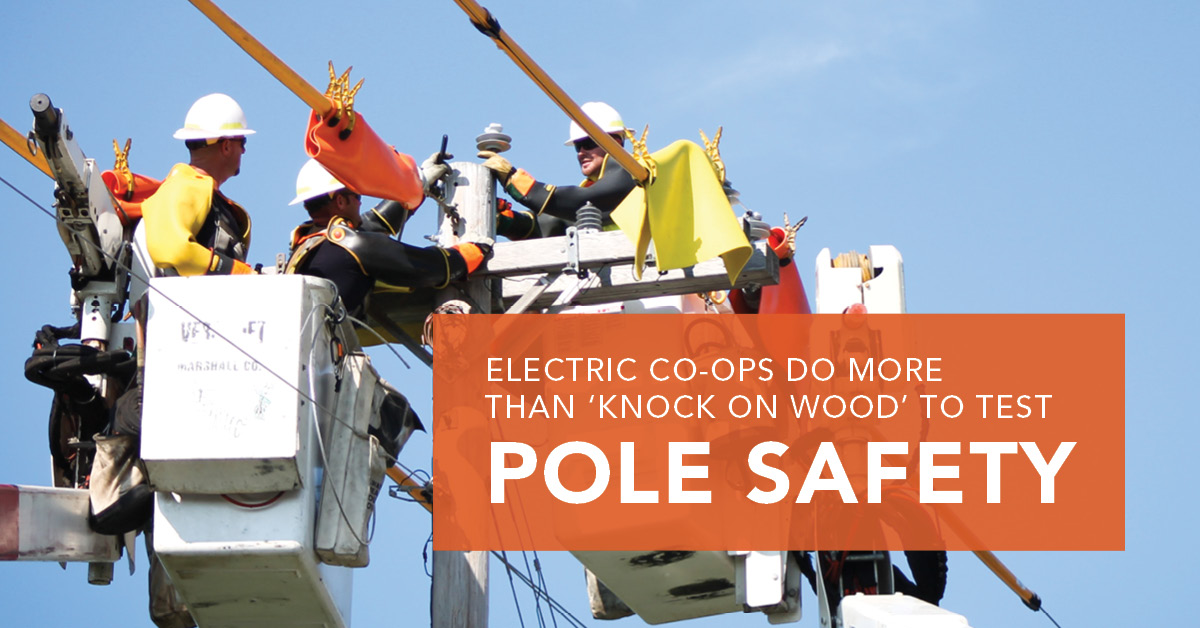
When we lose electric service, we have come to expect it will be restored in a short time. But when a devastating storm causes major damage over a widespread area, longer outages cannot be helped.
It involves much more than flipping a switch at a substation or pulling a fallen tree off a downed power line. Your local line crews work around the clock resetting poles and rebuilding miles of line. Sometimes, it requires extra hands of highly trained workers from electric cooperatives in neighboring counties, other parts of Indiana, and even from neighboring states coordinated by specialists from Indiana Electric Cooperatives to come to the aid of your local crews who all work together.
In many cases, resetting or replacing fallen and broken poles also requires calling into 811 — the Indiana “Call before you dig” service — before crews can dig new holes. This is required to locate other buried utilities along the right-of-way and can add time to the restoration.
“Line crews work long, hard hours to rebuild poles and lines to restore service after major storms,” said John Gasstrom, CEO of Indiana Electric Cooperatives, “but it’s an arduous task that needs to be done methodically to be done safely.”
Every electric cooperative follows a basic principle when it comes to restoring power: priority is given to the lines that get the most back in service the quickest. Here’s a basic order of repair:
- Transmission lines. These high voltage lines carry electricity from generating plants to substations (or between substations). Since tens of thousands of people could be served by one transmission line, damage here needs to be taken care of first.
- Substations. These electrical facilities contain equipment that switch or regulate the voltage of electricity. They lower the voltage from the transmission lines so the electricity can be transmitted through the distribution lines. Problems here can affect thousands of consumers.
- Main distribution lines. You see these along roadways. They carry electricity from the substations to groups of consumers, like towns or housing developments.
- Tap lines. These lines run from the main distribution lines to utility poles and underground transformers outside houses or buildings.
- Individual service. These lines run from the transformer on the pole along the road or street or underground box to the consumer’s electric meter on the side of the home or business.
Even after a major storm, report an outage to your electric cooperative. This will help line crews assess the extent of the damage and isolate and repair problems as soon as possible.
Let the crews work
After a major storm with widespread damage and longer-than-usual power outages, it may be tempting to question your co-op’s line workers about the damage and check out what they are doing when you see them at work on the side of a road.
“For safety’s sake, the best thing for you to do when you see crews working is to let them do their jobs, without distractions,” said John Gasstrom, CEO of Indiana Electric Cooperatives. “Line personnel wear protective gear and are equipped and trained to be on site to restore power. It is dangerous for others to be milling around when we’re repairing lines.”
That advice also pertains to owners of property on which cooperative employees may be restoring power. And while you may be curious or even want to be helpful and friendly, safe linework requires full focus and attention.
“Safety is always first priority for us — your safety and our safety,” Gasstrom said. “Power restoration is a serious and unforgiving process that is best handled without bystanders. That way, we can get the power back on as quickly — and safely — as possible.”
Keep your co-op informed and stay informed during outages
Power restoration can be a tricky business, so if you lose service in your home or neighborhood please remember the following:
- Report the outage to your electric cooperative as soon as possible.
- Make sure your cooperative knows if loss of power affects life support systems or could cause any additional threat to health and safety. While you should let your co-op know this during an outage, inform your co-op whenever life support equipment dependent on electricity is brought into your home so it can keep this information with your file.
For updated information on outages, stay connected to your electric cooperative on social media.





